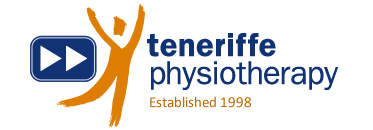One of the most common conditions we treat in our practice is ‘Tech Neck’, a term used to describe any neck pain related to electronic device use. This includes PC’s, laptops, tablets, and mobile phones.
What causes Tech Neck?
Sustained forward positioning of the head, either bending to look down or slumped with the chin poked forwards, causes overuse of the muscles that support the weight of your head. The further forward your head, the greater the loads. The muscles get sore, tense and stiff, and joints in your neck may also get strained.
Another troublesome practice is using multiple computer screens, such that your head and neck are frequently turned to the side.
What are the symptoms of Tech Neck?
Symptoms of Tech Neck include headaches, muscle aches, stiff painful joints, affected sleep, decreased concentration, irritable mood and vision disturbances.
How serious is Tech Neck?
A study by Shah and Desai(7) showed 42.9% of office workers have experienced pain with computer use. Other studies on mobile phone use have found between 40-70% of users(1) have had neck symptoms, with more than one in four of those with symptoms classed as moderate to severe.
How do you fix Tech Neck?
The majority of reviews have reinforced decades of evidence based practices. Here’s a few common tips:
- Have your main screen directly in front with the top of the screen 5cm above the eye-line at arms-length. Bring the mouse closer into your body and in-line with your shoulder.
- Change position every 15 mins. Prolonged positioning(3) causes unnecessary strain on the body (standing desks have helped greatly).
- Reduce sustained head forward postures. Use a stand for your mobile phone or tablet when you can. If you are out and about, hold the phone up in front of you rather than tilting your head forwards.
- Perform exercises that help to restore neck range of movement and strength.
- Recliner chairs that support your head and trunk at a 25-30 degree reclined angle will rest your neck extensor muscles and may be a more comfortable position to watch TV or listen to music or a podcast.
- Seek health practitioner advice if neck pain lasts more than 2 days and hinders your normal daily activity.
How do we treat Tech Neck?
Physiotherapy treatments can reduce pain levels and have improved outcomes compared to a ‘wait and see’ approach, with a correlation of early intervention and return of function well documented (2,4,5,6). Our treatment options include exercises, supportive posture strapping, soft tissue massage, joint mobilisations, dry needling and ergonomic assessments. We can often improve your situation just by looking at photos of you working at your computer or analyzing how you are using your portable devices.
What is the take home message?
Tech Neck is an extremely common condition that is likely to significantly affect many of us from time to time. If you notice Tech Neck symptoms starting to bother you, a visit to our experienced clinicians will help identify your problems and treat them accordingly!
References:
1Alsiwed, K. T., Alsarwani, R. M., Alshaikh, S. A., Howaidi, R. A., Aljahdali, A. J., & Bassi, M. M. (2021). The prevalence of text neck syndrome and its association with smartphone use among medical students in Jeddah, Saudi Arabia. Journal of Musculoskeletal Surgery and Research, 5(4), 266-272.
2 Green, B. N. (2008). A literature review of neck pain associated with computer use: public health implications. The Journal of the Canadian Chiropractic Association, 52(3), 161.
3 Hoe, V. C., Urquhart, D. M., Kelsall, H. L., & Sim, M. R. (2012). Ergonomic design and training for preventing work related musculoskeletal disorders of the upper limb and neck in adults. Cochrane Database of Systematic Reviews, (8).
4 Hush, J. M., Michaleff, Z., Maher, C. G., & Refshauge, K. (2009). Individual, physical and psychological risk factors for neck pain in Australian office workers: a 1-year longitudinal study. European spine journal, 18(10), 1532-1540.
5 Moffett, J. A. K., Jackson, D. A., Richmond, S., Hahn, S., Coulton, S., Farrin, A., … & Torgerson, D. J. (2005). Randomised trial of a brief physiotherapy intervention compared with usual physiotherapy for neck pain patients: outcomes and patients’ preference. Bmj, 330(7482), 75.
6 Moffett, J., & McLean, S. (2006). The role of physiotherapy in the management of non-specific back pain and neck pain. Rheumatology, 45(4), 371-378.
7 Shah, MM., & Desai, R. (2021) Prevalence of neck pain and back pain in computer users working from home during COVID-19 pandemic: a web-based survey. International Journal of Health Sciences and Research, 11(2), 26-31

